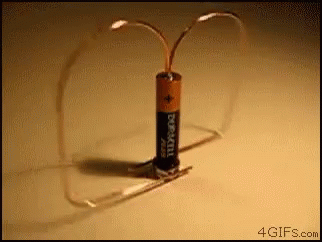Today (December 4, 1850) is the anniversary of William Sturgeon, the inventor of the first electric magnet and the inventor of the practical electric motor.

William Sturgeon was born May 22, 1783, in Whittington, near Cornford,
Lancashire, England. Trained with a shoemaker. In 1802 Sturgeon joined the
army. He also studied mathematics and physics. In 1824 he became a science and
philosophy lecturer at the East India Company's military seminar in Addiscombe,
Surrey. The following year he exhibited his first electromagnet. The first
electromagnet he built was a horse-shaped wrought iron. When the current passes
through the coil, the electromagnet becomes magnetic, and when the current is
stopped, the coil becomes magnetic. Sturgeon showed its strength by raising 9
pounds of iron with seven ounces of iron covered by wires that transmitted the
current of a single cell battery. Through this, a current was sent from a
battery.



Electricity can regulate its electromagnetism — that is, it can adjust
the magnetic field by adjusting the electric field. It was the beginning of the
use of electricity to create effective and controllable machines and laid the
foundations for large-scale electronic communications. In 1832 he was appointed
lecturer at the Adelaide Gallery of Practical Science in London. Where D.C. He
first proved that an electric motor includes a commutator. In 1836 he founded
the Journal of the Annals of Electricity, Magnetism and Chemistry. In the same
year, he invented a galvanometer. Sturgeon was a close associate of John Peter
Cassiat and Charles Vincent Walker, and all three were instrumental in founding
the London Electrical Society in 1837.



In 1840 he became supervisor of the Royal Victoria Gallery of Practical
Science in Manchester. He formed a close social circle with John Davis, one of
the promoters of the gallery, and James Prescott Joule, a student of Davis. It
eventually included Edward William Binny and surgeon John Lay. The gallery was
closed in 1842. And he led a life of discourse and demonstration. William
Sturgeon, the inventor of the electric motor, passed away on December 4, 1850,
at the age of 67 in Prestwich, Greater Manchester. He was buried there, in the
church of St. Mary the Virgin, where he is identified as "William Sturgeon
- The Electrician" on the grave floor.
Source By: Wikipedia
Information: Ramesh, Assistant Professor of Physics, Nehru Memorial College, Puthanampatti, Trichy.
Get information like this
https://t.me/joinchat/jpqj3jQLN51kYTk9
Join Telegram Group.
https://chat.whatsapp.com/HHC5m0Jz3Ue1E8ilgta0YT
Join WhatsApp Group
Thanks.
Also, Read
🛑👍 CSIR-NET Physics Materials and Problems
🛑📕 21 GB and Hundreds of Physics E-Books Collection.
🛑🛥️ How does an Electric Motor work? (DC Motor).
🛑🤹♂️ Science Academies' Summer Research Fellowship Programme for Students and Teachers 2022.
🛑🔌 How does a Transformer work - Working Principle electrical engineering.
🛑🎙️ Transistors Explained - How transistors work.
🛑🔥⚡ How Thermocouples Work - basic working principle.
🛑🔌 Voltage Explained - What is Voltage? Basic electricity potential difference
🛑🔌 What is CURRENT– electric current explained, electricity basics.


.jpg)
No comments:
Post a Comment